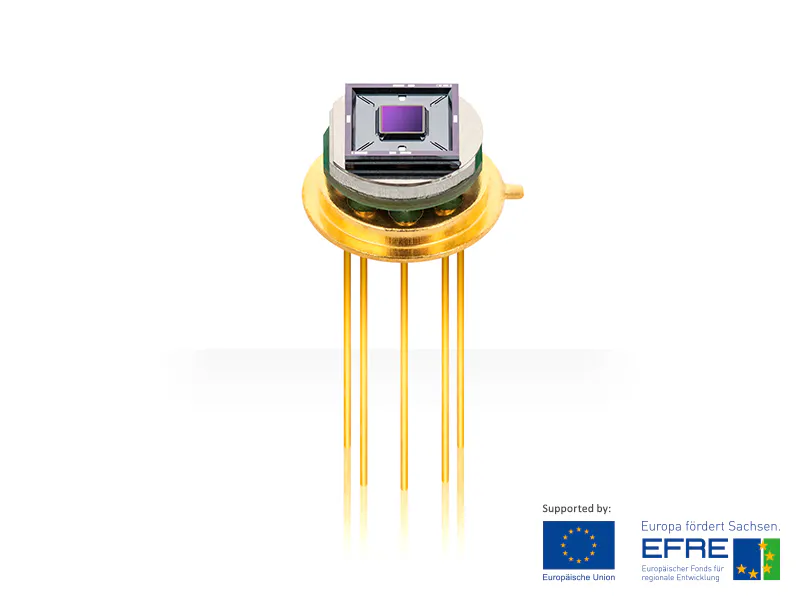
Entry into New Spheres and Markets
More than ten years ago, a tunable detector with Fabry-Pérot filter (FPI detector) from InfraTec won the AMA Innovation Award for outstanding research and development work. Later additional also international awards were added. Since then, further development of this special group of pyroelectric detectors never stopped. Now, InfraTec engineers, with financial support from the European Union's European Regional Development Fund, have succeeded for the first time in integrating one of our FPI detectors into a TO39 housing.
This success results from InfraTec's participation in the research project "miniMODUL – highly miniaturised spectrometer module for IR gas sensor technology", which will run until July 2019. Partner here is the Center for Microtechnologies (ZfM) of the Chemnitz University of Technology. With its expertise in MEMS, it supports InfraTec in the development and manufacturing of Fabry-Pérot filter (FPF). This cooperation is a significant factor towards producing spectrometric IR sensors that are smaller and more cost-efficient than solutions currently available in the market but with almost the same capability.
Entry into new market segments
In this specific market, the designs of many devices for integrating relevant NDIR gas sensors are based on the housing formats TO39 and TO5 with a diameter of 9.2 mm. The opportunity to now use a TO39 housing means a reduction of existing dimensions by around 40 percent.
Comparison of the size of the detectors' FPF shows the same ratio. In the first FPI detectors, the filter had dimensions of 8.6 × 8.6 mm2. In the currently available models, the size is already just 7 × 7 mm2. This value shrinks due to the new development further to just 5 × 5 mm2 – and so it covers only one third of the original surface area. Production costs also fall as a result, since more FPI chips fit onto a wafer.
Numerous applications conceivable
The list of potential tasks that can be solved with highly miniaturised spectrometer modules with FPF is an already very extensive one. It ranges from testing the quality of liquid or gaseous energy carriers to analysis of milk components to investigating tissue for early cancer detection. The potential of these smaller FPI detectors lies mainly in their implementation in very compact, portable sensors. Moreover, they open additional opportunities for use in more price-sensitive sectors, such as security technology and medicine.
Further details about tunable detectors